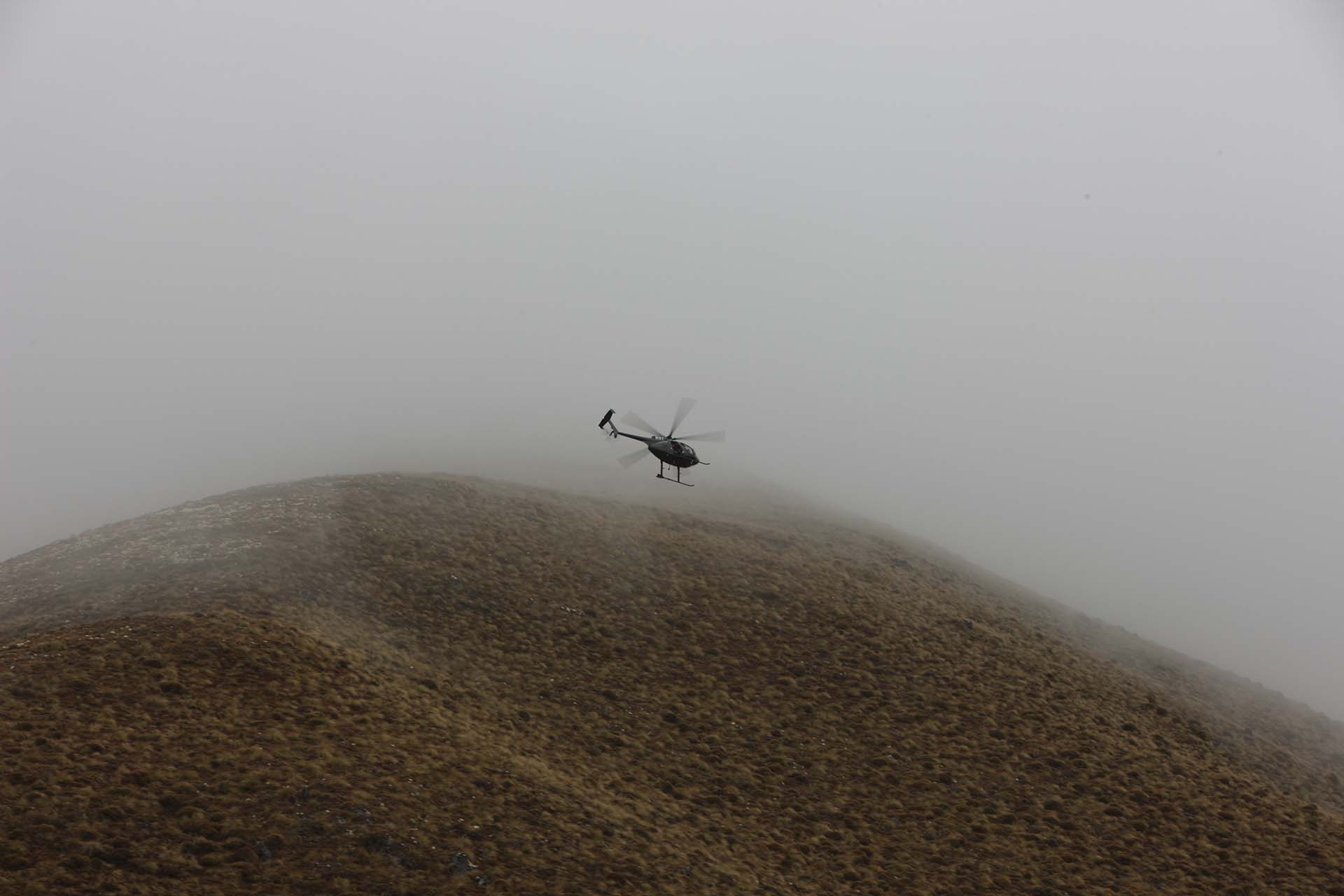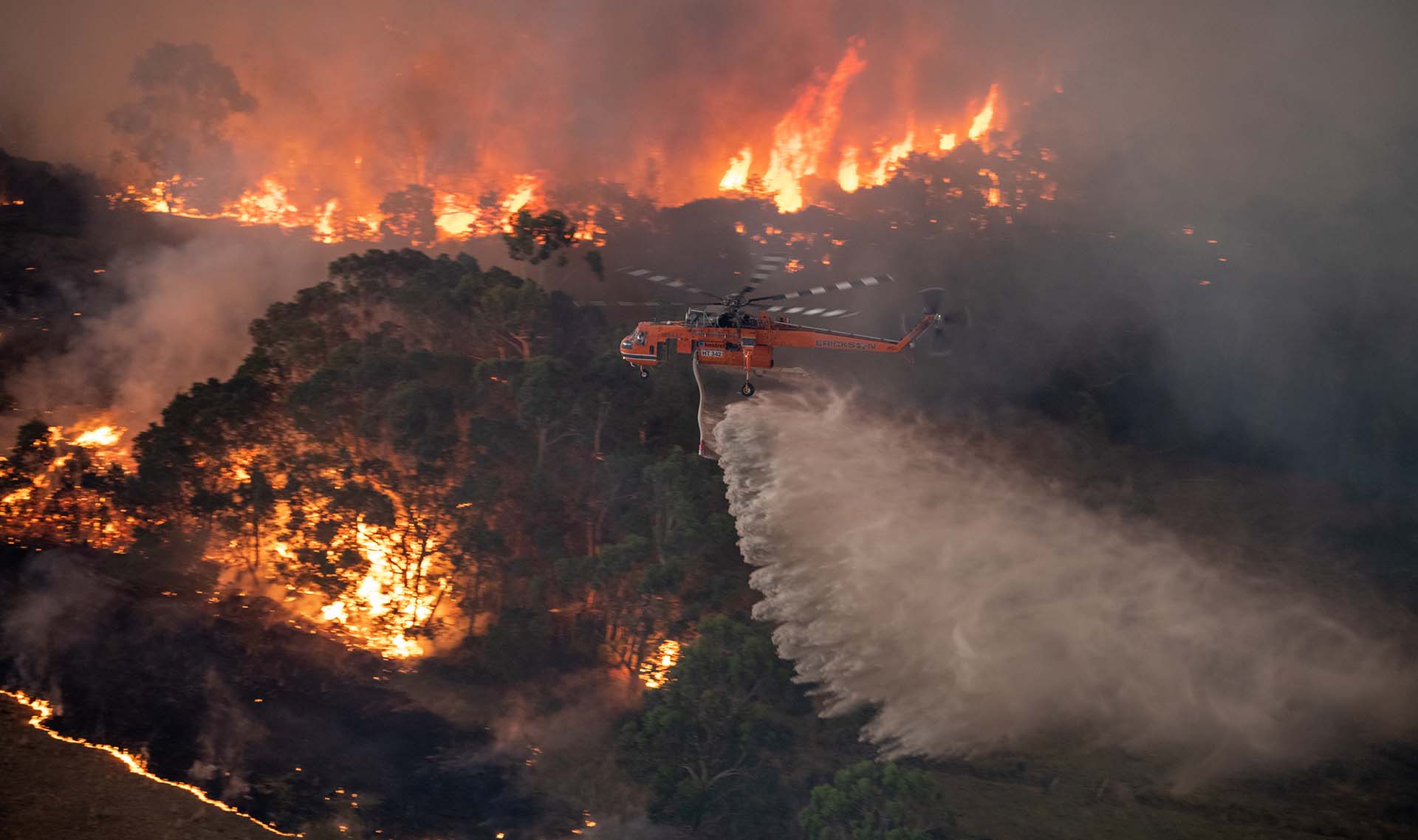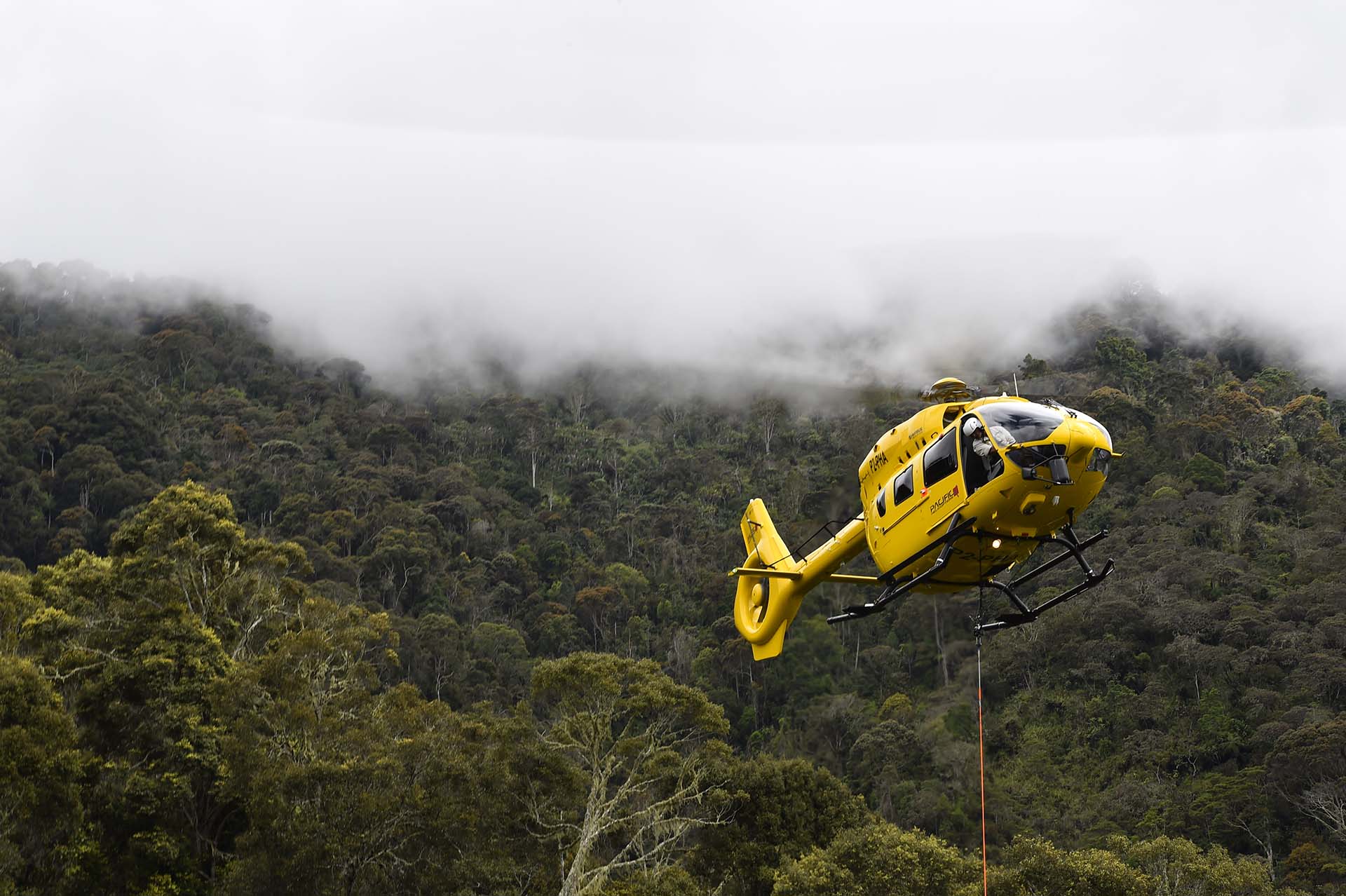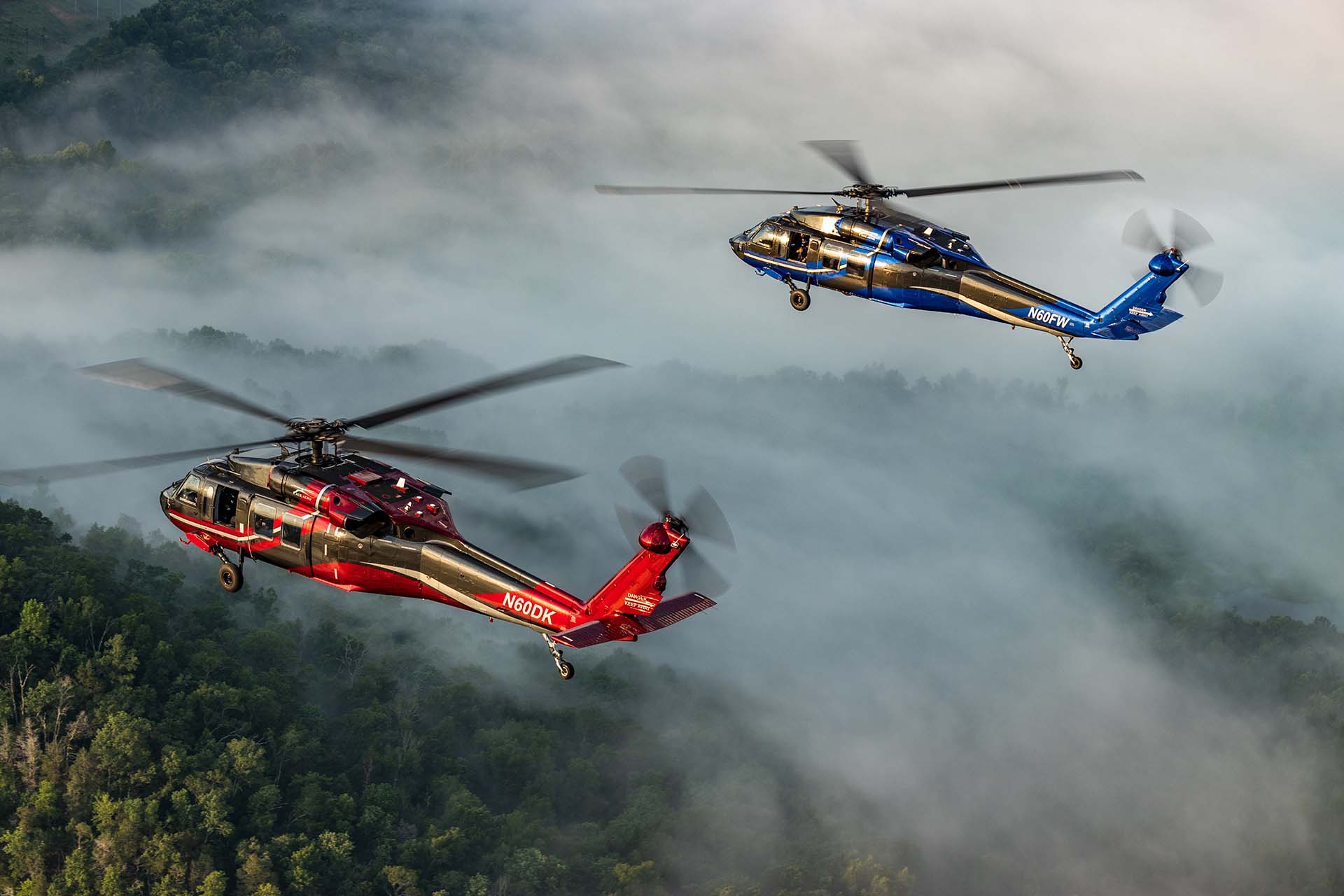Year after year, we see multiple general aviation accidents and fatalities involving visual flight rules (VFR) flights continuing into instrument meteorological conditions (IMC). Does 14 CFR 91.157 entice pilots to continue flight in dangerous weather conditions? Eric Smith from the Middle Tennessee State University, Aerospace Department, investigates.
Instrument flight rules (IFR) are required in surface-based airspace (previously known as “control zones”) with weather reported less than 1000-foot ceiling and 3 statute miles visibility. Special Visual Flight Rules are referenced in 14 CFR 91.157 and it allows VFR pilots to operate within the surface based airspace with a special VFR clearance from air traffic control in weather conditions of one statute mile visibility (half for helicopters), and clear of clouds. This condition can theoretically be lower than IFR landing minimums. Does 14 CFR 91.157 entice pilots to continue flight in dangerous weather conditions?

Origin
In 1958, the Civil Aeronautics Board (CAB) issued a Civil Air Regulation (CAR) Amendment 60-11 to the air traffic rules pertaining to VFR weather minimums. The CAB describes in detail the proposal of increasing VFR minimums in controlled airspace to 1500 ft ceiling and 5 SM visibility along with the counter proposal of the general aviation community to discourage the increased weather minima, as it would have an impact on non-instrument rated pilots and aircraft. It is important to note the CAB never mentions flight into IMC but is specifically concerned about mid-air collisions in the control zone. The primary question the board faced was, “How much safety will be increased by raising the weather minimums and what impact will it have to the users of the airspace?” They were told one piece of evidence that proved fundamental in their decision to not increase VFR minimums and allow a “Special VFR” regulation. In the previous 10 years, 98% of all mid-air collisions occurred in visibility of 3 miles or greater. The board cited this in their amendment and listed “basic” VFR minimums and “special” VFR minimums. Special VFR was determined to allow VFR aircraft to transition from reduced minimums in uncontrolled airspace to the higher weather minimums in controlled airspace, legally (Civil Aeronautics Board, 1958). The newly organized Federal Aviation Agency had to re-address this 3 years later in CAR Amendment 60-22, and specify situations like flying beneath a ceiling, and defining “special VFR” as, “weather conditions which are less than basic VFR and which permit flight under visual flight rules as specified in 60.31” (Federal Aviation Agency, 1961).
Weather Reporting Problems
Aviators use nautical miles in flight planning, airspeeds, performance, and distance. The aviator’s brain is used to this unit of measurement. However, when it comes to weather reporting we still use statute miles from years ago when planes used miles per hour, and weather observers used statute mile markers at an airfield. A visibility report of three statute miles is only 2.6 nautical miles. The visibility is also reported at an airfield with an airspeed of zero. It is easy to see how an aircraft traveling at 120 knots, covering two nautical miles every minute, can easily fly into IMC conditions with legal visibility of three statute miles. Additionally, an aircraft traveling in special VFR at that speed is covering one statute mile in less than 30 seconds. In 1995, The Journal of Air Law and Commerce, published an article titled “Death by Misinformation - Governmental Liability for Faulty FAA Weather Information”. It cites numerous lawsuits in which the Federal Aviation Administration (FAA) was responsible for weather misinformation or negligence in reporting dangerous conditions to pilots. The article raises questions about the dual roles of pilots and the FAA and who is ultimately responsible or culpable, determining the FAA must be held accountable for causation to some degree (Alimonti, 1995). Special VFR continues to provide pilots a legal means to fly in unsafe weather conditions and when it results in an accident the pilot is blamed for continuing flight in IMC conditions.

Advisory Circular (AC 61-134) was published April 1, 2003, titled “General Aviation Controlled Flight into Terrain (CFIT) Awareness”. It claims that 17% of fatal GA accidents are caused by CFIT, and over half of the CFIT accidents are caused by IMC conditions. The AC was a product of the CFIT Joint Safety Analysis Team (JSAT) and includes top 10 recommendations to avoid CFIT in IMC. Two of which are to “improve the safety culture within the aviation community”, and the other is to “improve the quality and substance of weather briefs”. From 1995 to 2003, the FAA was officially notified at least four times that their weather information was inadequate. In #8 of the AC 61-134, it states that pilots continue to fly VFR into IMC conditions and claims that IMC conditions are that of less than VFR, or Special VFR (Federal Aviation Administration, 2003). However, special VFR is one mile visibility (half mile for helicopters) and clear of clouds, which is sometimes less than IFR landing minimums.
First Rule of Flight Club, Don’t Talk about Flight Club
In January 2020, a well-known basketball player, Kobe Bryant, and eight others were killed in a helicopter crash in California in marginal weather conditions. Experienced pilots in the community knew right away what happened because it continues to happen over and over. A VFR only part 135 operator flew into IMC and became spatially disoriented. The official NTSB cause of the accident is listed as “continued VFR into IMC CFIT” (Bertorelli, 2021). Blame was given to the operator and pilot for deciding to continue flight, citing poor decision making, and failing to commit to instruments. If we read the fine print, there is very subtle wording about the pilot’s special VFR clearances. The pilot used SVFR legalities to conduct an IFR flight through rising terrain near the Van Nuys airspace. Of course, the pilot in command (PIC) retains the final conduct and responsibility of the flight, but it is important to note that up until the pilot entered the cloud the flight was conducted in a legal manner due to special VFR. Perhaps the FAA, charged with ensuring the safe and efficient operation of air traffic is unaware of this legal conundrum? Because of the NTSB categorization of these types of accidents and the legal use of special VFR, it makes getting special VFR accident causes very difficult from the NTSB database. We know they exist, but because it is a legal CFR it is not listed in causation, merely marginal weather conditions.

On January 14, 1975, the NTSB chairman, John Reed, sent a letter to the FAA administrator, Alexander Butterfield, expressing concern over Special VFR and recommended abolishing special VFR and require the same weather minimums outside controlled airspace as within controlled airspace. He stated that from 1964 to 1972, 44 fatal accidents occurred with 105 deaths, involving Special VFR clearances. He goes on to say:
Under current special VFR rules, weather conditions could be below IFR landing minimums prescribed for an airline transport pilot, yet a student pilot or a private pilot with low flight-hours and no instrument rating could be granted permission to land during daylight with a ceiling as low as 100 feet, so long as the visibility was at least 1 mile. The special VFR weather minimums do not consider such factors as terrain clearance and obstacle clearance, which are considered in IFR minimums. (Reed, NTSB, 1975)
The NTSB was concluding that the special VFR rules did not provide an adequate margin of safety. The FAA denied the recommendation and has never re-addressed this concern. Interestingly, Cessna aircraft, the most popular general aviation airplane at the time, produced its 100,000th single engine airplane in 1975 and had record profits.
Insanity-Same Processes Expecting Different Results
Continued flight under VFR into IMC remains the predominant cause for fatal accidents by percentage for general aviation despite the technological advances in aircraft and air traffic control (ATC). The use of GPS, synthetic vision, night vision goggles, and autopilot systems have made IFR flight easier and less task-driven than before. In recent years, the FAA has shifted from an enforcement philosophy to a compliance philosophy with programs like the Voluntary Disclosure Reporting Program (VDRP), and NASA safety reports. ATC has been very cooperative in giving pilots “pop-up IFR” clearances if the weather deteriorates. There must be some sort of motivation causing the continued flight into IMC.

In 2020, Collegiate Aviation Review International conducted a study into motivations for continued flight into IMC. It was a collaborative effort with Embry-Riddle Aeronautical University and Middle Tennessee State University. The study used three groups of participants, in three distinct motivational categories including: intrinsic (internal motivation of completing a task strictly for accomplishment), extrinsic (motivated by an external factor, like money, fear of punishment, or requirement to complete a task), and no motivation. All three groups experienced VFR, Marginal VFR, and IFR weather conditions. It was expected that the groups with no motivation or intrinsic motivation would abort the flight in the marginal VFR scenarios. However, the marginal VFR scenario showed almost an identical percentage of intrinsic and extrinsic motivation groups continuing, with the intrinsic mean of 59.21%, and the extrinsic mean of 59.77%, and the no motivation group at 51.59%. The study found a correlation that as weather conditions deteriorated, participants did decrease their level to persist with 95% in VFR, about 60% in Marginal VFR, and about 13% in IFR. It is interesting that the motivations in the 3 groups did not seem to be a factor in willingness to persist. The study concludes that a pilot’s willingness to continue is not dependent on the motivations, but in fact are a result of biases and continuation error in the aeronautical decision-making process. It confirms that Maslow’s and Herzberg’s theories of motivation, which seek different levels of fulfillment can distort reasonable decision making in hazardous conditions (Woods, S, 2020). This study is more evidence that special VFR and allowing pilots to legally continue in poor weather conditions needs to be addressed.

Conclusion
Special VFR has real world uses when implemented for which it was designed for. It can be another tool in the aviator’s tool kit for recovery into an airport, or isolated fog within airspace that does not effect the landing or take-off environment. For the past 50 years, allowing VFR in poor weather using special VFR has proven fatal. Abolishing special VFR today does not appear to have the impact on general aviation like the CAB stated in 1958. It will not prevent VFR pilots from flying or require an increase in the number of instrument ratings. It will merely eliminate flights in marginal VFR conditions when a pilot is not trained or holds an instrument certificate. Eliminating special VFR will also force a pilot to transition to instruments and obtain a “pop-up IFR” clearance if weather does deteriorate, rather than continue to “scud run”. Evidence of fatalities regarding this CFR is extremely difficult to obtain since it is legal. However, analysis of reported weather conditions during the majority of CFIT weather related crashes proves majority of the flights could have been categorized as special VFR, regardless of whether the pilot obtained a clearance or not. This is alarming.
 HOME
HOME



